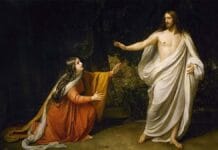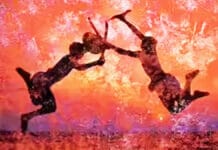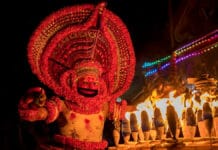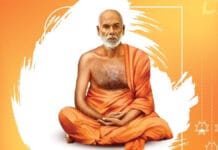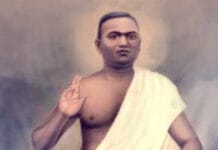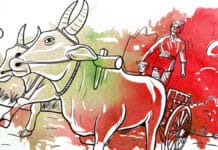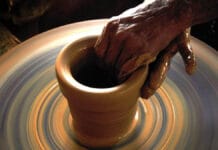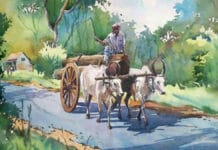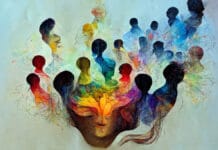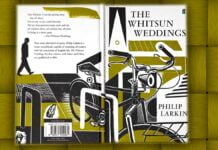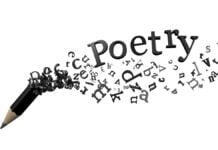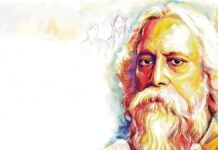Albert Camus’s The Plague -original title La Peste -was first published in 1947 and is one of the most important works in existential literature. Set in the fictional town of Oran, Algeria, the novel tells the story of a plague outbreak and examines the effects it has on both individuals and society as a whole. The novel is often regarded as an allegory for the human condition and a reflection on Camus’s philosophy of the absurd.
The Plague explores themes of suffering, mortality, solidarity, and existentialism, questioning how individuals and communities react to the inevitability of death and the chaos of human existence. Through the various characters’ responses to the epidemic, Camus offers a powerful meditation on the human capacity for resilience and despair in the face of an indifferent universe.
Summary
The Plague concerns an outbreak of bubonic plague in the French-Algerian port city of Oran, sometime in the 1940s. The first-person narrator is unnamed but mostly follows Dr.Bernard Rieux. Rieux notices the sudden appearance of dying rats around town, and soon thousands of rats are coming out into the open to die. The public grows panicked, and the government finally arranges a daily cremation of rat bodies. Soon after the rat epidemic disappears, M.Michel, the concierge for Dr. Rieux’s office building, dies with a strange fever. More cases appear, and Dr.Rieux and his colleague Dr.Castel believe the disease is bubonic plague. They urge the government to take action, but the authorities drag their feet until the death toll rises so high that the plague is impossible to deny. Finally, they close the gates and quarantine Oran.
The townspeople react to their sudden isolation with feelings of exile and longing for absent loved ones, with each individual assuming their suffering is unique. Father Paneloux, a Jesuit priest, delivers a sermon declaring that the plague is a divine punishment for Oran’s sins. Raymond Rambert, a foreign journalist, tries to escape Oran and rejoin his wife in Paris, but the bureaucracy and the unreliability of the criminal underground hold him up. He is aided in his attempts by Cottard, a man who committed an unknown crime in the past and has since then lived in constant paranoia. Cottard is the only citizen to welcome the plague, as it reduces the rest of the public to his fear and loneliness, and he builds up a small fortune smuggling. Meanwhile, Rieux struggles ceaselessly against the plague and is joined by Jean Tarrou, another visitor to Oran, and Joseph Grand, an older municipal clerk who longs for his ex-wife and struggles daily over the first sentence of a book he is trying to write.
Tarrou organises an anti-plague sanitation league, and many volunteers join to help. Rambert finalises his escape plan, but when he learns that Dr.Rieux is also separated from his wife who is ill in a sanatorium, he decides to stay and fight the plague. After several months, the public loses the selfishness in their suffering and recognises the plague as a collective disaster. Everyone grows weary and depressed, and the death toll is so high that the authorities have to cremate the bodies. The young son of M.Othon, the strict local magistrate, comes down with the plague and Rieux and his companions – among them Father Paneloux – watch him suffer and die. The child’s death shakes Paneloux, and he delivers a second sermon, this time declaring that the horrors of plague leave only the choice to believe everything about Christianity or deny everything. Paneloux falls ill and dies soon afterwards, though he does not have the symptoms of the plague.
Tarrou explains to Rieux how he has spent his life opposing the death penalty and “fighting the plague” in its many forms. The two men take a brief break to swim and then return to work. Grand falls ill with the plague, but then he miraculously recovers. Other patients recover as well, and soon the epidemic is on the retreat, but then Tarrou falls ill. After a long struggle against the disease, he dies. The townspeople slowly regain their hope and begin to celebrate. Only Cottard is upset by the end of the plague, and on the day the town’s gates reopen, he goes mad and starts randomly firing a gun into the street until he is arrested. Grand writes a letter to his ex-wife and resumes work on his book. Rambert’s wife joins him in Oran, but Dr.Rieux learns that his wife has died at the sanatorium. The townspeople quickly return to their normal lives, trying to pretend nothing has changed. Dr. Rieux reveals himself as the narrator of the chronicle, which he wrote as a testament to the victims of the plague and the struggles of the workers. He knows the victory over the plague is only temporary, as the bacillus microbe can lie dormant for years.
Main Characters
Dr.Bernard Rieux
The novel’s protagonist is a doctor who remains pragmatic throughout the crisis. Rieux’s role as the narrator and a central character illustrates his commitment to humanity and the fight against suffering. While he is often overwhelmed by the horror around him, he continues to treat the sick and work tirelessly, embodying Camus’s philosophy of absurd heroism.
Jean Tarrou
A visitor to Oran who becomes a close ally of Rieux in the fight against the plague. Tarrou is a philosophical observer who records the events of the outbreak and reflects on the meaning of human suffering. His philosophical stance on life is accepting suffering and engaging in action to resist evil.
Raymond Rambert
A journalist who initially seeks to escape the quarantine and return to his wife in Paris. His desire to flee represents the egoistic survival instinct. However, after developing a deeper understanding of the crisis and the plight of the townspeople, Rambert decides to stay and help fight the plague, symbolising the development of solidarity and moral responsibility.
Cottard
A man who initially benefits from the chaos as he is involved in illegal activities. His fear of the plague becomes intertwined with his personal fear of the law, and his emotional breakdown under the pressure of the epidemic reveals his internal sense of guilt and alienation.
Father Paneloux
A Jesuit priest initially interpreted the plague as a form of divine punishment for the sins of the people. His views change over time, and he eventually dies after contracting the disease himself, having transformed his faith.
Themes and Philosophical Reflections
The Absurd and the Human Condition
One of the key philosophical underpinnings of The Plague is Camus’s concept of the absurd—the idea that life is inherently meaningless, and yet humans have an inherent desire to find meaning in it. The plague, in this context, represents the randomness and indifference of the universe. The townspeople’s reactions to the plague reveal their attempts to find meaning or understanding in the face of suffering and death.
Camus uses the plague outbreak to illustrate the absurdity of existence, showing that humans can either resign themselves to it or choose to live with purpose. For Rieux, the solution lies in taking responsibility for one’s actions and fighting the suffering of others despite knowing that the end is inevitable. In doing so, he embodies Camus’s idea of the absurd hero, who lives authentically even in the face of an indifferent world.
Suffering and Solidarity
Another prominent theme in The Plague is the collective experience of suffering and the importance of solidarity in times of crisis. Throughout the novel, individuals once isolated in their private lives are forced to confront the shared human condition. The plague does not discriminate, and as it spreads, the people of Oran must either unite in their common suffering or fall apart into selfishness.
The novel portrays the moral development of characters like Rambert and Father Paneloux, who evolve from self-interest to solidarity with others. The character of Dr. Rieux, who acts out of a deep sense of duty to others despite the personal cost, becomes a symbol of moral clarity, rejecting any easy answers or religious explanations and instead focusing on practical action.
Existentialism and Freedom
Camus’s existentialism emerges through the freedom of choice characters have in the face of suffering. Even though they are all trapped within the quarantine, the characters retain the freedom to choose their responses to the crisis. Rambert’s decision to stay in Oran despite his initial desire to escape is a significant moment of existential choice, representing a shift towards moral responsibility.
The randomness of the plague, which seems to strike indiscriminately, calls attention to the randomness of life itself, where people must create their own meaning through their actions rather than rely on external forces such as faith or preordained destiny.
Narrative Technique and Style
Camus’s narrative technique in The Plague is detachment and objectivity, which aligns with the philosophy of existentialism. The story is presented through the eyes of Dr. Rieux, who is both an active participant in the events and an observer. This gives the novel a clinical distance, allowing readers to reflect on the events without becoming too emotionally involved in individual stories. This approach creates an overall sense of universality —the plague is not just a local disaster, but a symbol of human suffering across all societies and cultures.
The monologue-style dialogue between characters adds to the reflective tone, allowing for moments of introspection and philosophical inquiry. The characters are often involved in long discussions about the meaning of the plague and what it represents, making the novel as much a philosophical treatise as it is a narrative about a literal epidemic.
Symbolism and Allegory
The Plague is an allegory for the existential condition and the human response to crisis. The plague is not just a literal disease but a metaphor for the absurdity of life and the random nature of suffering. In the novel, the plague is omnipresent, like the absurdity of human existence, where the search for meaning in a world devoid of inherent purpose is constant but often futile.
Camus’s portrayal of Dr. Rieux as a figure who rejects fatalism and instead commits to fighting for the wellbeing of others embodies the absurd hero: a person who chooses to live with dignity and responsibility, despite the harsh realities of life.
Themes of Resistance and Human Resilience
The novel suggests that human resilience and solidarity become sources of meaning in the face of overwhelming suffering. Even in the most dire circumstances, characters such as Rieux, Tarrou, and Rambert demonstrate that working together for the common good is the only way to find purpose in an indifferent world. Though ultimately futile, the struggle against the plague is portrayed as an act of defiance against the absurd.
Relevance and Timelessness
The Plague resonates even today due to its timeless themes and universal reflections on the human experience. The novel’s exploration of suffering, death, isolation, and human resilience remains relevant in times of crisis, whether in natural disasters, pandemics, or social upheavals. Camus’s portrayal of humans’ collective struggle against an uncontrollable force speaks to the ongoing human experience of navigating an unpredictable and often hostile world.
Albert Camus’s The Plague is a deeply philosophical work that explores existentialism, suffering, and the human condition in the face of meaninglessness. Through the allegory of a plague that strikes the town of Oran, Camus invites readers to contemplate the nature of freedom, resistance, and solidarity in a world governed by chaos and uncertainty. Through its reflections on existential choice and the absurdity of existence, the novel is a masterpiece of literature and a profound commentary on how human beings navigate life’s challenges. Understanding Camus’s philosophy and the broader human struggle for meaning in an indifferent universe remains essential.

